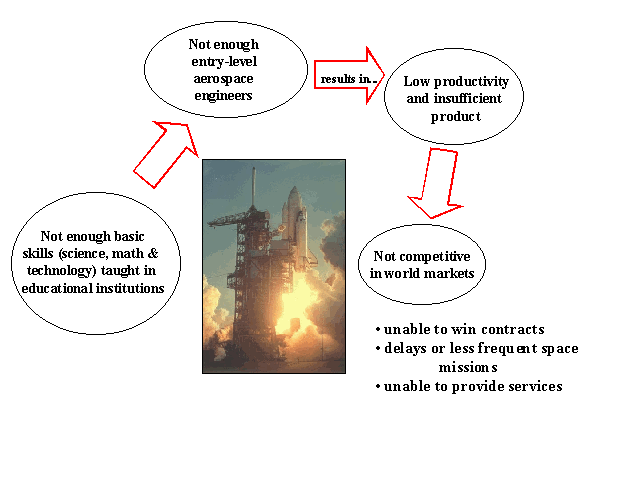
The Texas Space Leadership Council whose members include the Clear Lake Economic Development Foundation, NASA at Johnson Space Center, United Space Alliance, Boeing and Lockheed Martin conclude that there is not enough entry-level engineers to fill current positions plus the next 10 year. Statistics show that currently 1 in 10 positions are vacant in high-tech industry. The Human Resources Office at NASA/JSC is interested in analyzing why there is a declining number of entry-level engineers in the aerospace industry. This needs assessment, initiated by the Texas Space Leadership Council (TSLC) assessed this perceived decline of entry-level engineers in the aerospace industry. The educational mission of the TSLC is assure future generations of engineering, math, science and computer science professionals. The Education Subcommittee of the TSLC will review the recommendations of this needs assessment and determine the strategy to alleviate this problem. The TSLC has an inherent interest in the ability of the workforce to maintain the skills required to remain competitive in the aerospace industry. The shortage of the engineers affects productivity by decreasing the skill pool from the human resources of these companies. This shortage results in the inability of the organizations to meet their work commitments. A shortage within an organization causes a shortage of staff which leads to an overwhelming burden on associate engineers to the point of volunteer termination. This results in low productivity.
NASA's mission includes all matters pertaining to the civilian space and aeronautical research activities of the nation. Work includes basic and applied research for the expansion of human knowledge of phenomena in the atmosphere and space; the improvement of the usefulness, performance, speed, safety and efficiency of aeronautical and space vehicles; the development and operation of vehicles capable of carrying instruments, equipment, supplies and living organisms through space; and the preservation of the role of the United States as a leader in aeronautics and space activities within and outside the atmosphere. The workforce at the Johnson Space Center consists of about 3,000 NASA Federal civil service employees and about 12,000+ contractor employees. The majority of the NASA civil service employees are professional engineers and scientists.
As per the client's request, the problem addressed by this needs assessment
is a shortage of entry-level and qualified engineers in the Texas aerospace
industry. The inadequate number of high-tech fields was measured by the
noted 25% increase of volunteer termination reported to the respected human
resource departments. The result is low productivity and an insufficient
product, such as the inability to provide services and win contracts with
delayed space missions. NASA is experiencing a decrease in productivity
resulting in an insufficient product. The client requested a needs assessment
addressing the specific problem of a shortage of entry-level and qualified
engineers in the Texas aerospace industry as measured by human resources
hiring records. The determination of the optimal number of incoming engineers
was based on the current and projected employment needs, the actual number
of incoming engineers, the team looked for causes for the discrepancy between
them, and identified potential solutions in order to reduce or eliminate
the discrepancy.
